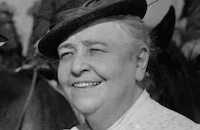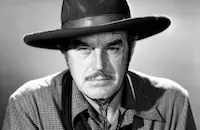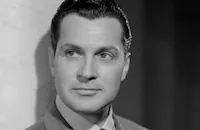The Scarlet Empress

Brief Synopsis
Cast & Crew
Josef Von Sternberg
Marlene Dietrich
John Lodge
Sam Jaffe
Louise Dresser
C. Aubrey Smith
Film Details
Technical Specs

Synopsis
The young German princess Sophia Frederica is chosen by Queen Elizabeth of Russia to marry her nephew, the "royal halfwit" Peter, in order to provide a sane male heir to the throne. Elizabeth changes Sophia's name to Catherine and, following the wedding, Peter tells the queen he hates his wife. When the marriage remains unconsummated, Catherine is blamed. Meanwhile, the debonair Count Alexei pursues Catherine and gives her a locket that contains his picture. The queen discovers their rendezvous, however, and demands that Catherine not leave her sight. That night, Catherine discovers Alexei is the queen's lover and throws his locket out her window, but in remorse goes out into the snowy night to find it. There she meets Lieutenant Dmitri, a guard, who does not recognize her. In an act of vengeance, Catherine makes love with him and becomes pregnant. When she gives birth to a boy, Catherine satisfies the queen, but Peter knows the child is not his and his hatred for Catherine grows. When the queen dies, Peter becomes czar and begins a reign of terror, torturing and murdering thousands of Russians. By befriending much of the royal army through her feminine wiles, Catherine builds her defense against the increasingly insane Peter. When Peter has Catherine arrested in order to bring his mistress to the throne, Catherine escapes and, with the help of General Orloff, storms the palace, after which Orloff murders Peter.

Director

Josef Von Sternberg
Cast

Marlene Dietrich
John Lodge

Sam Jaffe
Louise Dresser

C. Aubrey Smith

Gavin Gordon
Olive Tell
Ruthelma Stevens
Davison Clark
Erville Alderson
Phillip Sleeman
Marie Wells

Hans Von Twardowski
Gerald Fielding
Maria [sieber]
Jameson Thomas

Edward Van Sloan

Jane Darwell

Harry Woods
John Davidson

Kent Taylor
Richard Alexander
Hal Boyer
Eric Alden

James Burke
Belle Stoddard Johnstone
Nadine Beresford
Eunice Moore
Petra Mcallister
Blanche Rose
James Marcus
Thomas C. Blythe
Clyde David
Julanne Johnston
Elinor Fair
Bruce Warren
George Davis
Agnes Steele
Barbara Sabichi
Katherine Sabichi
May Foster
Minnie Steele
Dina Smirnova
Anna Duncan
Patricia Patrick
Elaine St. Maur
Crew
Emanuel Cohen
Bert Glennon
W. Frank Harling
Manuel Komroff
John M. Leipold
Eleanor Mcgeary
Felix Mendelssohn
Harry Mills
Josef Von Sternberg
Peter Ilyich Tchaikovsky
Richard Wagner
Sam Winston
Adolph Zukor

Photo Collections
Videos
Movie Clip





Film Details
Technical Specs

Articles
The Scarlet Empress - Lobby Cards

The Scarlet Empress - Lobby Cards
The Scarlet Empress
A highly fictionalized biopic of the German-born Russian empress Catherine the Great, the film's screenplay by Manuel Komroff was supposedly based on Catherine's diary. The original title was Her Regiment of Lovers to capitalize on both Catherine's reputation and Dietrich's image as one of Hollywood's sexiest stars. That title was changed after complaints from the Hays Office (the official motion picture censorship board). Sternberg wanted to make a film that was "a relentless excursion in style" and he achieved that with sumptuous sets by an uncredited Hans Dreier and costumes by an equally uncredited Travis Banton. Banton, at that time Paramount's top designer, had argued with Dietrich over her desire for a large fur hat, similar to the one that Garbo had worn that year in Queen Christina (1933). Banton did not want to copy the design, but Dietrich argued that no one would remember what Garbo wore. The argument held up production, which began near Thanksgiving, 1933 (and lasted until January 26, 1934) with Dietrich's own daughter, Maria Sieber, playing Catherine as a young girl. Using the name Maria Riva, she would later have a successful career of her own, acting in films and television, as well as writing an acclaimed book about her mother.
Disagreements over costumes weren't the only problems encountered during the making of The Scarlet Empress. An English film The Rise of Catherine the Great (1934) starring Douglas Fairbanks, Jr. and Elisabeth Bergner had bombed at the box office. Another problem was von Sternberg himself. Malene Sheppard Skaerved wrote, "The film failed spectacularly. In 1934, audiences were not looking for imperial Russian excesses. The Great Depression at its height, F.D. Roosevelt been elected to change the country's fortunes and cinema audiences cried out for homely escapism; Paramount had misfired. In years to come, the extravagance and sweep of the film would be admired and treasured. At the time that did not help Dietrich and von Sternberg. Paramount Pictures deflected most of the criticism that the film received and directed it at von Sternberg, insisting that Dietrich merely acted as she was told. Von Sternberg was an easy figure to hate, as he was self-consciously convinced of his own brilliance, arrogant, and prone to self-pity. People regularly walked off his sets and despised his self-proclaimed genius and perfectionism; although the results were often brilliant, his means of achieving them crossed the boundaries of abuse of his crew and cast."
Dietrich was not spared von Sternberg's abusive behavior. According to Diana McLellan, von Sternberg and Dietrich had violent arguments that lasted for days, with the two only speaking to each other on the set, and then strictly when necessary. "So after three days of the silent treatment, she and Mercedes [de Acosta, author and Dietrich's reported lover] hatched a plot. Marlene would fall off her horse on the set and pretend to be badly injured. Mercedes' doctor would be persuaded to take part. The 'accident' would stir up Jo[sef von Sternberg]'s more agreeable sentiments.
It worked. The empress of all the Russia sat haughtily upon her horse, then quietly tumbled to the ground. The cameras stopped. The crew rushed to her side. Jo, beside himself, ran to his fallen star, who looked dead. He screamed for a doctor who appeared with amazing speed and kissed Marlene's hands as he begged her forgiveness.
Mercedes' doctor darkly reported that Miss Dietrich had fainted, "probably from undue emotional strain." Jo drove her home, giddy with relief. Marlene sent herself flowers, "from Mercedes." The Scarlet Empress was finished in peace." All the emotional drama was in vain. When the film was released in the United States on September 15, 1934, the reviews were less than stellar. The New York Time reviewer wrote, "Josef von Sternberg has created a bizarre and fantastic historical carnival in The Scarlet Empress [...] By ordinary standards Mr. von Sternberg outrages even the cinema cognoscenti who have continued, in the face of his excesses, to preserve their faith in him as one of Hollywood's most interesting and original directors. A ponderous, strangely beautiful, lengthy and frequently wearying production, his new work is strictly not a dramatic photoplay at all, but a succession of over-elaborated scenes, dramatized emotional moods and gaudily plotted visual excitements. Its players, with the twin exceptions of Sam Jaffe as the crazy Peter and Louise Dresser as the Empress Elizabeth, seem to lose their hold on humanity under Mr. von Sternberg's narcotic influence, and become like people struggling helplessly in a dream. Mr. von Sternberg has even accomplished the improbable feat of smothering the enchanting Marlene Dietrich under his technique, although his fine camera work never does her less than justice. "
Producer: Josef von Sternberg (uncredited)
Director: Josef von Sternberg
Screenplay: Catherine II (diary); Manuel Komroff (diary arranger); Eleanor McGeary (contributor, uncredited)
Cinematography: Bert Glennon
Art Direction: Hans Dreier (uncredited)
Film Editing: Josef von Sternberg, Sam Winston (both uncredited)
Cast: Marlene Dietrich (Princess Sophia Frederica/Catherine II), John Lodge (Count Alexei), Sam Jaffe (Grand Duke Peter), Louise Dresser (Empress Elizabeth Petrovna), C. Aubrey Smith (Prince August), Gavin Gordon (Capt. Gregori Orloff), Olive Tell (Princess Johanna Elizabeth), Ruthelma Stevens (Countess Elizabeth 'Lizzie'), Davison Clark (Archimandrite Simeon Todorsky/Arch-Episcope), Erville Alderson (Chancelor Alexei Bestuchef), Phillip Sleeman (Count Lestoq), Marie Wells (Marie Tshoglokof).
BW-104m. Closed Captioning.
by Lorraine LoBianco
SOURCES:
A.D.S. "Mr. von Sternberg Presents Miss Dietrich and The Scarlet Empress at the Capitol" New York Times 15 Sept. 1934
McLellan, Diana The Girls: Sappho Goes Hollywood
Robinson, HarlowRussians in Hollywood, Hollywood's Russians: Biography of an Image
Sheppard Skaerved, Malene Dietrich
The Scarlet Empress
Quotes
I want to play with my toys!- Grand Duke Peter
Trivia
Notes
According to scripts in the Paramount Script Collection at the AMPAS Library, the working titles for this film were Her Regiment of Lovers, Catherine II and Catherine the Great. The film credits "a supporting cast of 1000 players." Narrative titles are used throughout the film to advance the plot. The film was not released until almost four months after the production was completed. According to modern sources, the reason why Paramount held up its release was that the studio wanted to avoid box office competition from the Alexander Korda production Catherine the Great, starring Elisabeth Bergner, which was released in the United State on March 16, 1934. The Scarlet Empress reportedly cost $900,000 to produce. In his autobiography, director Josef von Sternberg states that "about ten feet" of the film, which showed "an enormous number of Russians swarming through the streets," was borrowed from Ernst Lubitsch's 1928 film The Patriot, and Lubitsch, not recognizing his own scene, chastised Sternberg for "willful waste and disregard of costs," believing he had shot the elaborate scene himself. Sternberg states that he wrote a violin composition for one of the scenes and conducted the Los Angeles Symphony Orchestra in playing the film's score. Modern sources credit Travis Banton with costumes; Gordon Jennings with titles and effects; Milan Roder as an additional music arranger; Hans Dreier, Peter Ballbusch and Richard Kollorsz as set designers; and attribute the gargoyles and other figures that were displayed throughout the Muscovian court to Ballbusch, a Swiss sculptor. Maria Sieber, who as an adult acted under the name Maria Riva, was Marlene Dietrich's daughter. Actor John Lodge, grandson of Massachusetts Senator Henry Cabot Lodge, later became governor of Connecticut and ambassador to Spain. In addition to the 1934 Korda-United Artists film mentioned above, Catherine the Great was the subject of a 1968 British film, Great Catherine, directed by Gordon Flemyng and starring Peter O'Toole, Zero Mostel and Jeanne Moreau.

Miscellaneous Notes
Released in United States 1934
Released in United States 1974
Released in United States 1934
Released in United States 1974 (Shown at FILMEX: Los Angeles International Film Exposition March 28 - April 9, 1974)













